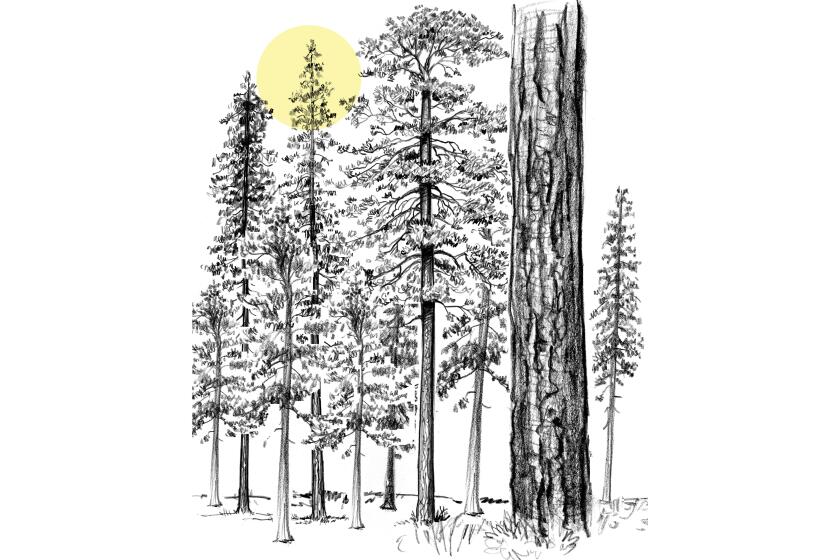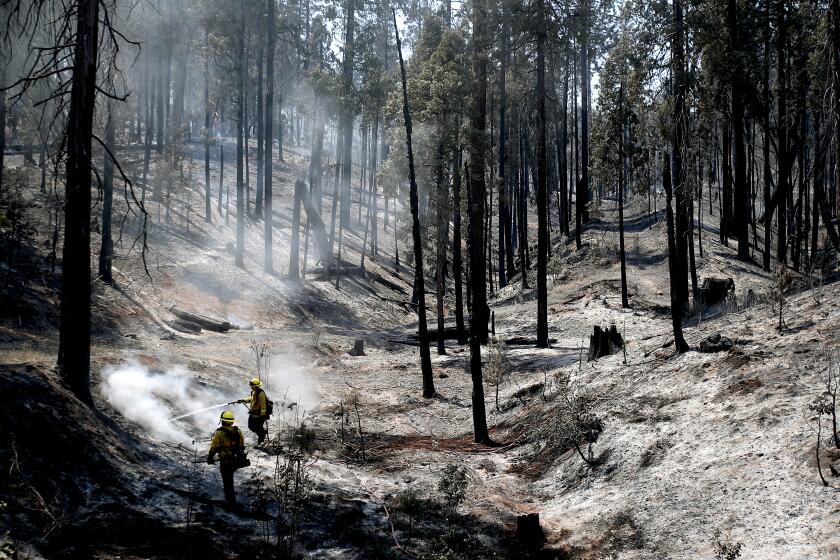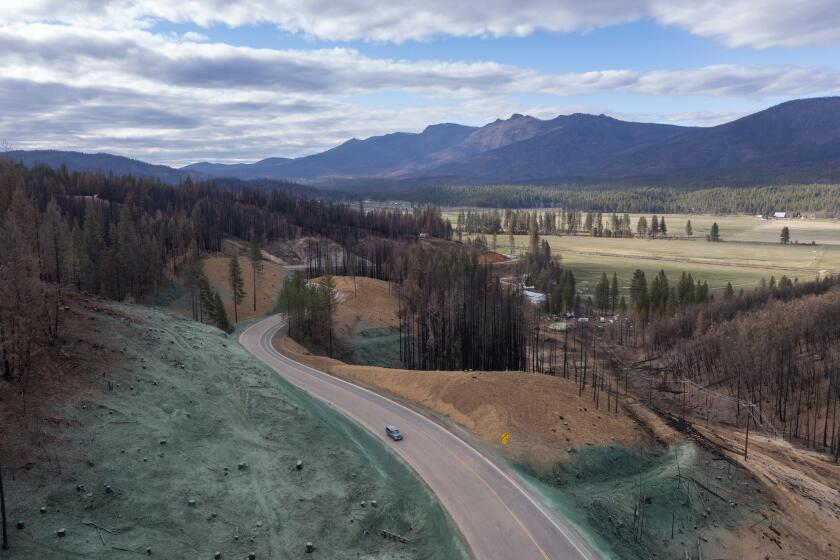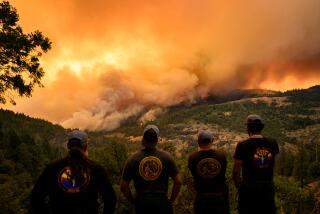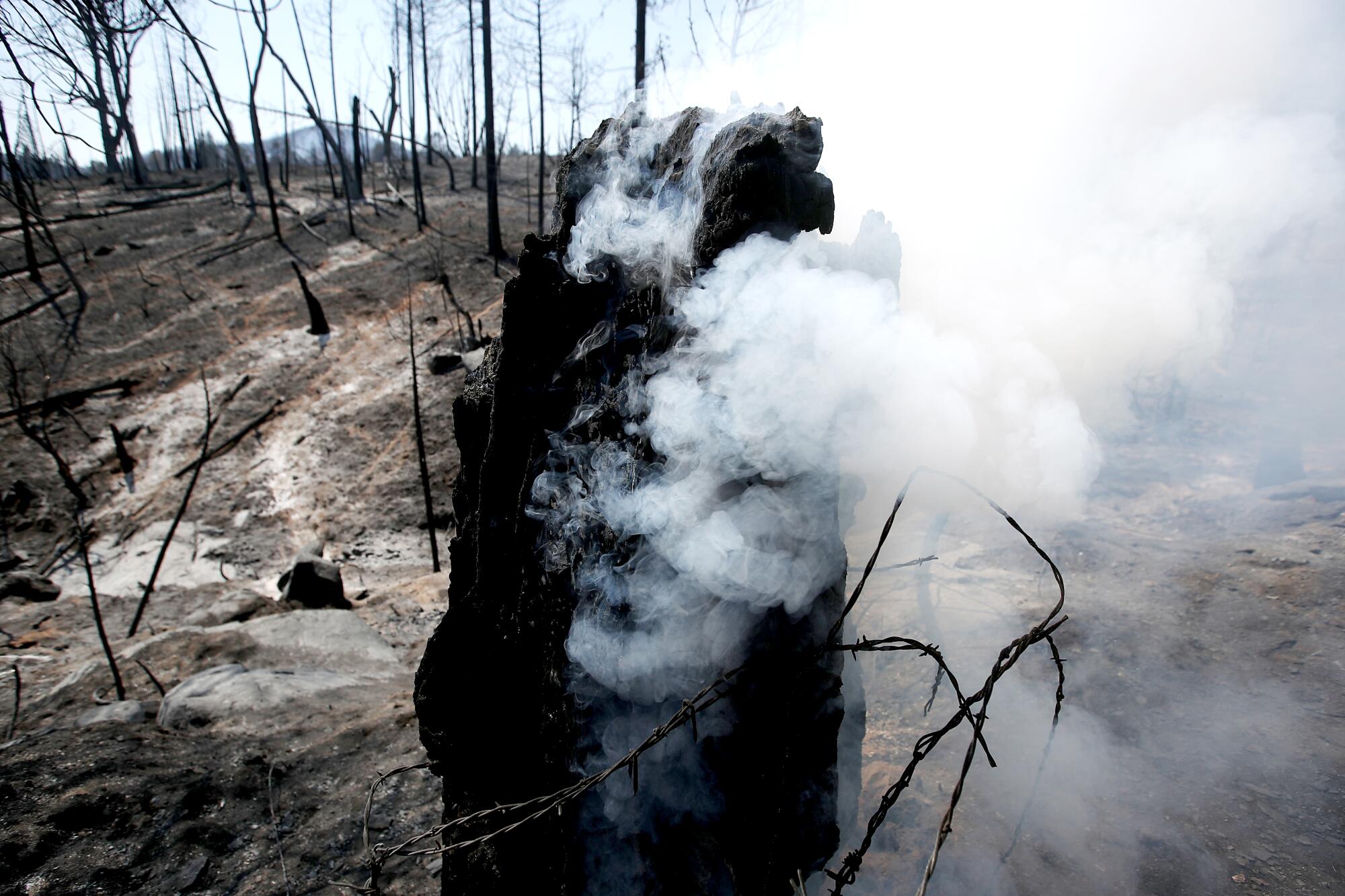
The land near Yosemite National Park had been tended by Irene Vasquez’s family for decades. They took care of their seven acres by setting small fires to thin vegetation and help some plants to grow.
But the steep, chaparral-studded slopes surrounding the property hadn’t seen fire since Vasquez and fellow members of the Southern Sierra Miwuk Nation were barred from practicing cultural burning on a wider scale some 100 years before.
When a wildfire swept through in July, the dense vegetation stoked flames that destroyed Vasquez’s home and transformed the land into a scarred moonscape. With that, she became one of many Indigenous residents to watch her ancestral territory burn in recent years, despite knowing the outcome could have been different.
“If we were able to impart that wisdom and knowledge to European settlers, to the agencies, to not stop our burning, we would be in a way different place,” Vasquez said.
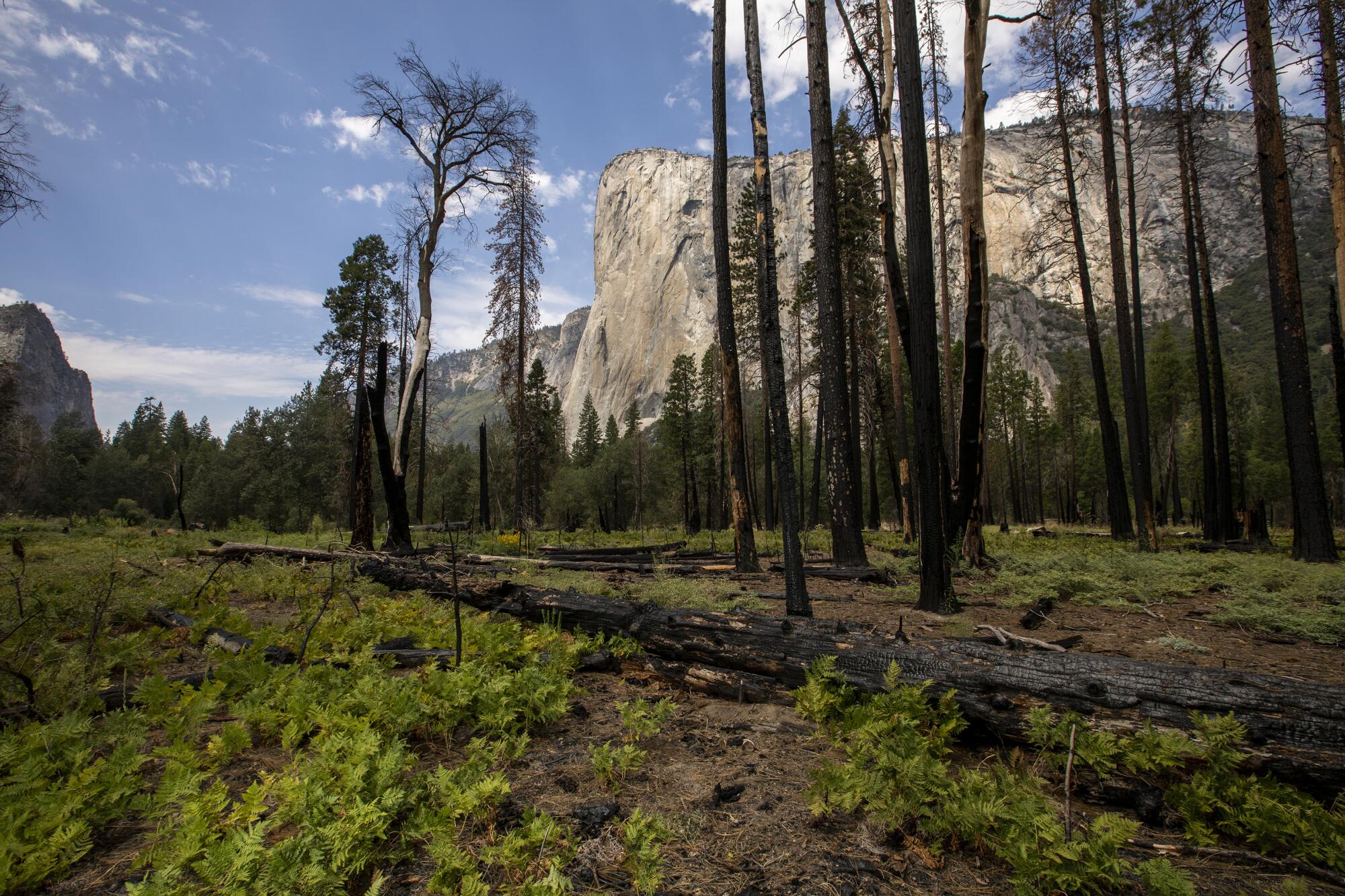
Cultural burning — the practice of using controlled fires to tend the landscape — was once widespread among many Indigenous groups, but ended with the arrival of European settlers.
Now, many experts say the lack of regular, low-intensity fire in some California ecosystems has contributed to an overgrowth of vegetation that has made wildfires grow larger and more severe. And, in a cruel irony, Native Americans are among those most affected, they say.
Indigenous residents are over three times more concentrated in California census tracts that see fires most frequently and where the most acreage burns, according to a study by UC Irvine researchers published in the International Journal of Environmental Research and Public Health.
Members of the Karuk Tribe lost homes when the Slater fire burned hundreds of properties in Siskiyou County in 2020. The Mountain Maidu saw their Greenville Rancheria office and health facilities destroyed and the landscape severely damaged when the Dixie fire tore through the heart of their homelands the following year.
In July, multiple members of the Southern Sierra Miwuk Nation were displaced by the Oak fire, which destroyed more than 100 homes in Mariposa County. The following month, the fast-moving McKinney fire — which killed four people — destroyed a building that housed Karuk tribal archives and resulted in a massive die-off of fish in the Klamath River, a hub of ceremonial activities.
As California struggles with an increase in extreme wildfires, researchers are studying exactly what a healthy or fire-resistant forest looks like.
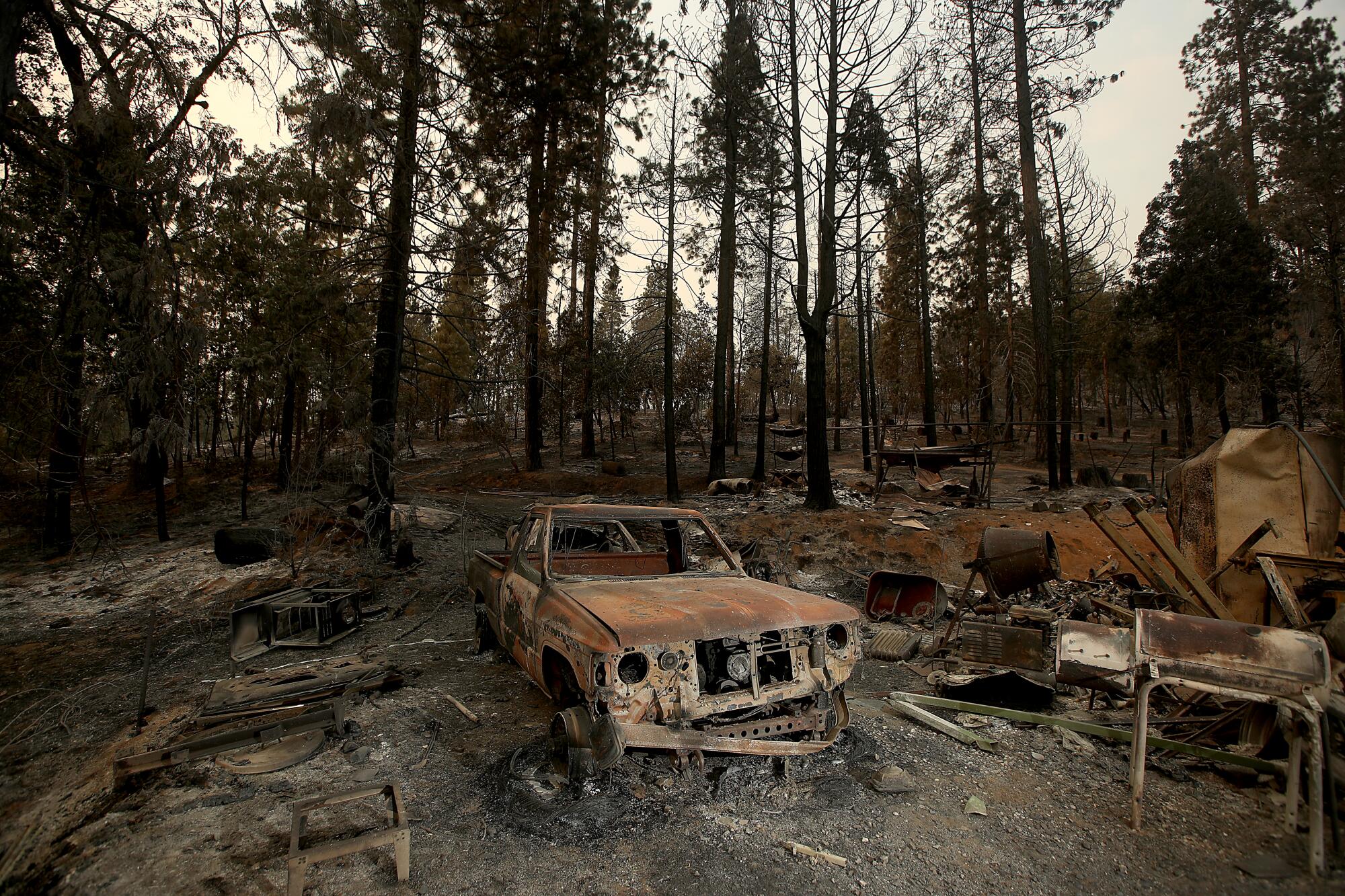
For Vasquez and other Southern Sierra Miwuk Nation members, recovery has been complicated by a 40-year legal battle for federal recognition. As an unrecognized tribe, the group is ineligible for many types of government aid. Its operations are supported by volunteer work, donations and grants received through its associated nonprofit, the American Indian Council of Mariposa County, which raised more than $100,000 through an Oak fire relief fund.
“We have a lot of people left with nothing,” said Clay River, who at the time of the fire was director of the Miwumati Healing Center, which serves as the hub for tribal health and social services. “Some people weren’t even able to make it home to try to get stuff so they have the car they were driving and the clothes on their back — that’s it.”
The fire damaged cultural sites, including prehistoric roundhouses and bedrock mortars where acorn grinding took place, said Waylon Coats, vice chair and cultural resource manager of the Southern Sierra Miwuk Nation, who worked as an archaeologist on the fire. Flames severely scarred the land and destroyed resources that were once available for gathering.
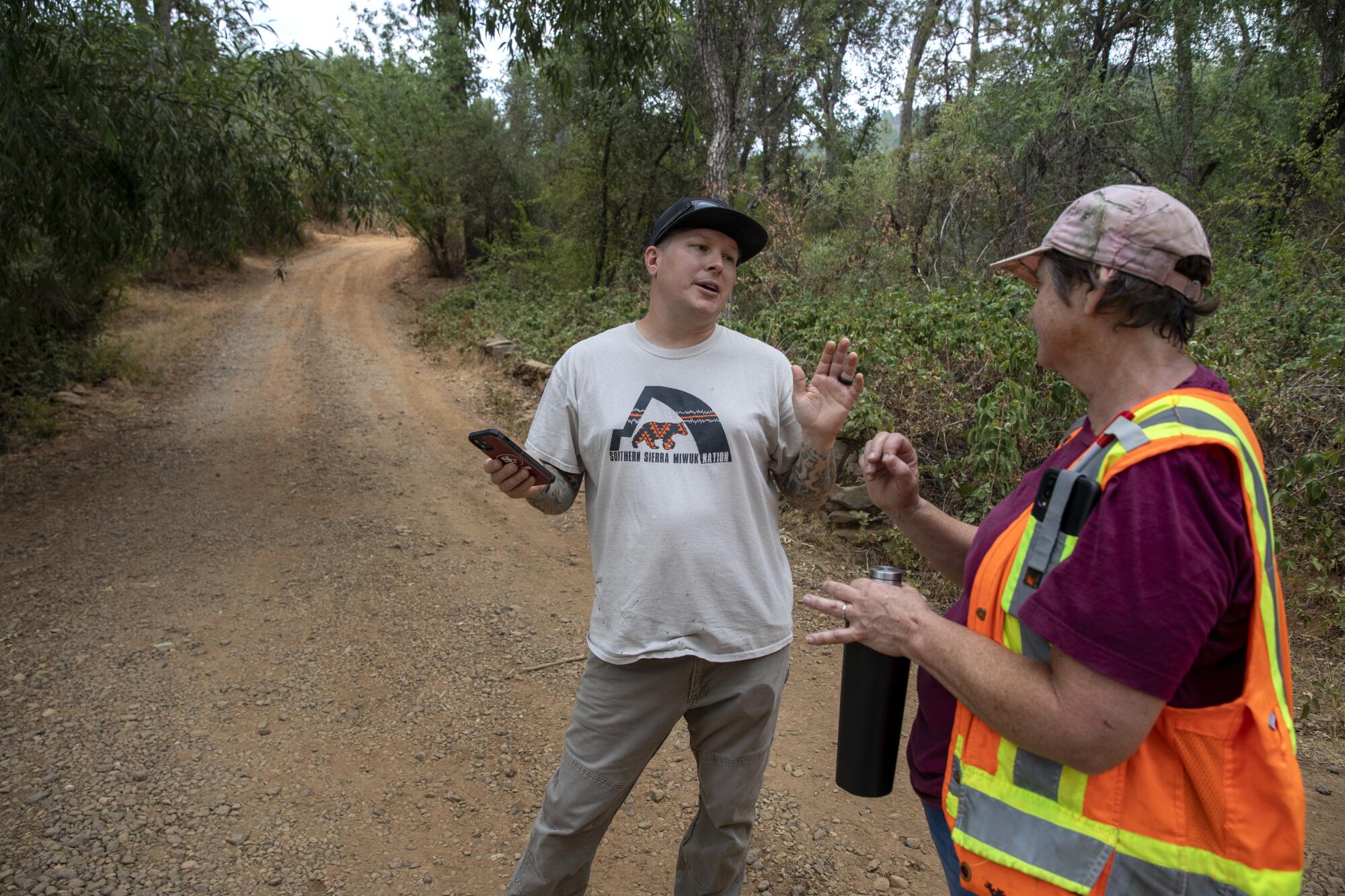
The practice is central to tribal culture, said Coats, who recalled how when he was a child, basket makers would gather basket making materials, hunters would gather hunting tools and medicine people would gather medicine. Burning was performed to help all of those tradespeople collect the best supplies possible, he said.
“We didn’t call it cultural burning,” he said. “We just called it taking care of the land.”
Community members would burn around deer grass to allow for new growth and help other native plants thrive. They would burn litter off the ground of oak groves so young trees could sprout up. They would set fires to keep areas around living quarters clear of debris and to improve hunting conditions.
These burns once occurred in and around hundreds of Southern Sierra Miwuk villages that dotted the Yosemite Valley and other areas of Mariposa County.
But in 1850, as the Gold Rush transformed the area into a mining free-for-all, the Legislature passed a law that essentially codified the slavery of Indigenous people, facilitated their removal from their lands and prohibited the use of cultural fire. At around the same time, state-sponsored militias undertook efforts to exterminate them.
Once Yosemite National Park was formed in 1890, those Southern Sierra Miwuk who had survived were no longer allowed to gather there or help manage the landscape.
“They were treated as if they had no historical knowledge by the people that were coming in to quote unquote preserve the land,” River said.
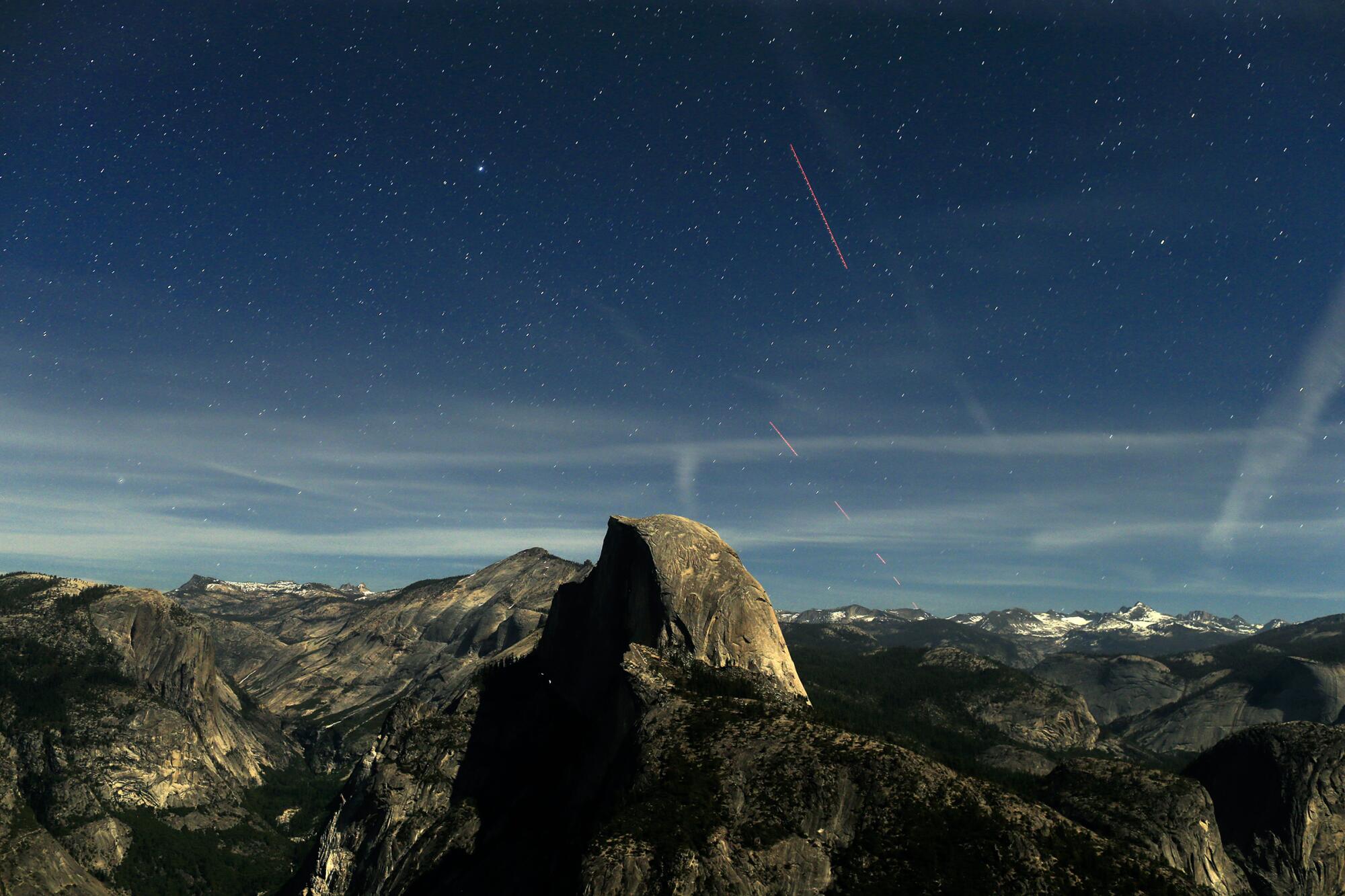
The last Southern Sierra Miwuk were not fully removed from Yosemite Valley until 1969, when park staff burned all but one of a small number of their cabins under the guise of fire training. Those who were displaced included Coats’ father and grandmother, who is one of the tribe’s oldest living elders and can still recall the trauma.
By then, the landscape surrounding the park had been transformed. What was once an interconnected mosaic of burns painstakingly conducted during different seasons for different purposes had been subdivided into neighborhoods, private ranches and industrial timber holdings whose owners had varying approaches to maintaining the land.
Now, many of the largest, most fire- and drought-resistant trees have been logged, and denser stands of younger trees have grown up in their place. No longer subjected to regular culling, invasive plants have helped form fuel ladders capable of carrying flames into the canopy. Pockets of forest haven’t seen any fire, intentionally or naturally sparked, in nearly a century. Hotter, drier conditions resulting from climate change have helped ensure this dense vegetation is primed to burn.
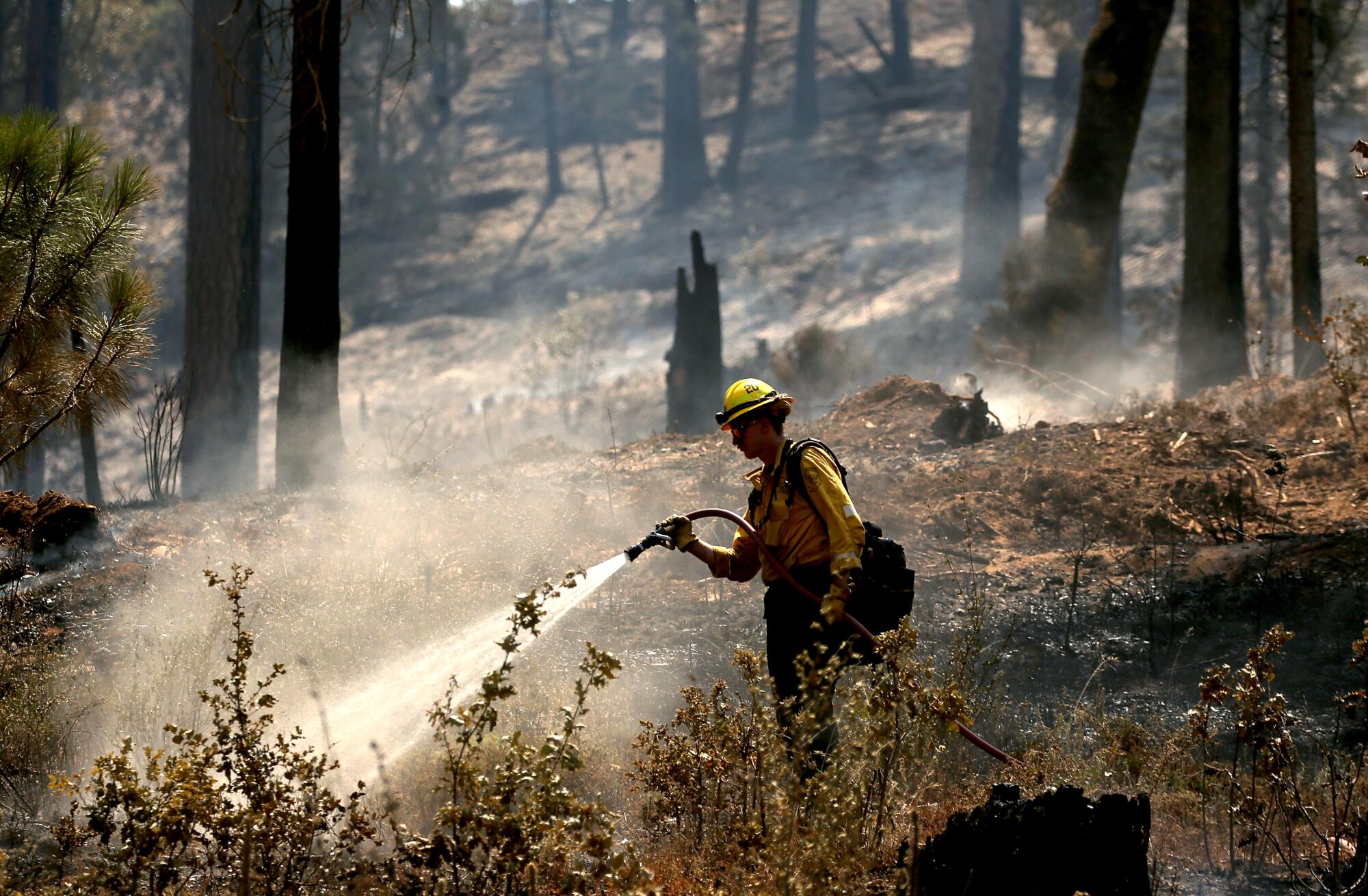
Fire officials cited these conditions as factors in the growth of the 19,000-acre Oak fire, which they described as primarily driven by heavy fuels, including conifers killed by drought.
Without federal recognition, the Southern Sierra Miwuk Nation has no land on which to practice burning. It is ineligible for funding that’s available to other tribes for land stewardship, education, job placement and training, cultural preservation work and community and economic development. Unlike members of other tribes who worked as cultural monitors on the Oak fire, Coats was ineligible to be paid for his work.
The tribe petitioned for recognition in 1982, four years after the federal government created the process. During the protracted proceedings that followed, they have provided thousands of pages of evidence proving their descent from the Miwuk people who signed at least two treaties with the United States in 1851 and 1852, said attorney Stephen V. Quesenberry, who has been involved in the tribe’s legal representation since 1984.
Most recently in 2018, the assistant secretary for Indian Affairs issued a proposed finding that recognition be denied, saying the Southern Sierra Miwuk had failed to prove they currently exist as a distinct Indigenous community. The tribe currently has until May 10 to respond.
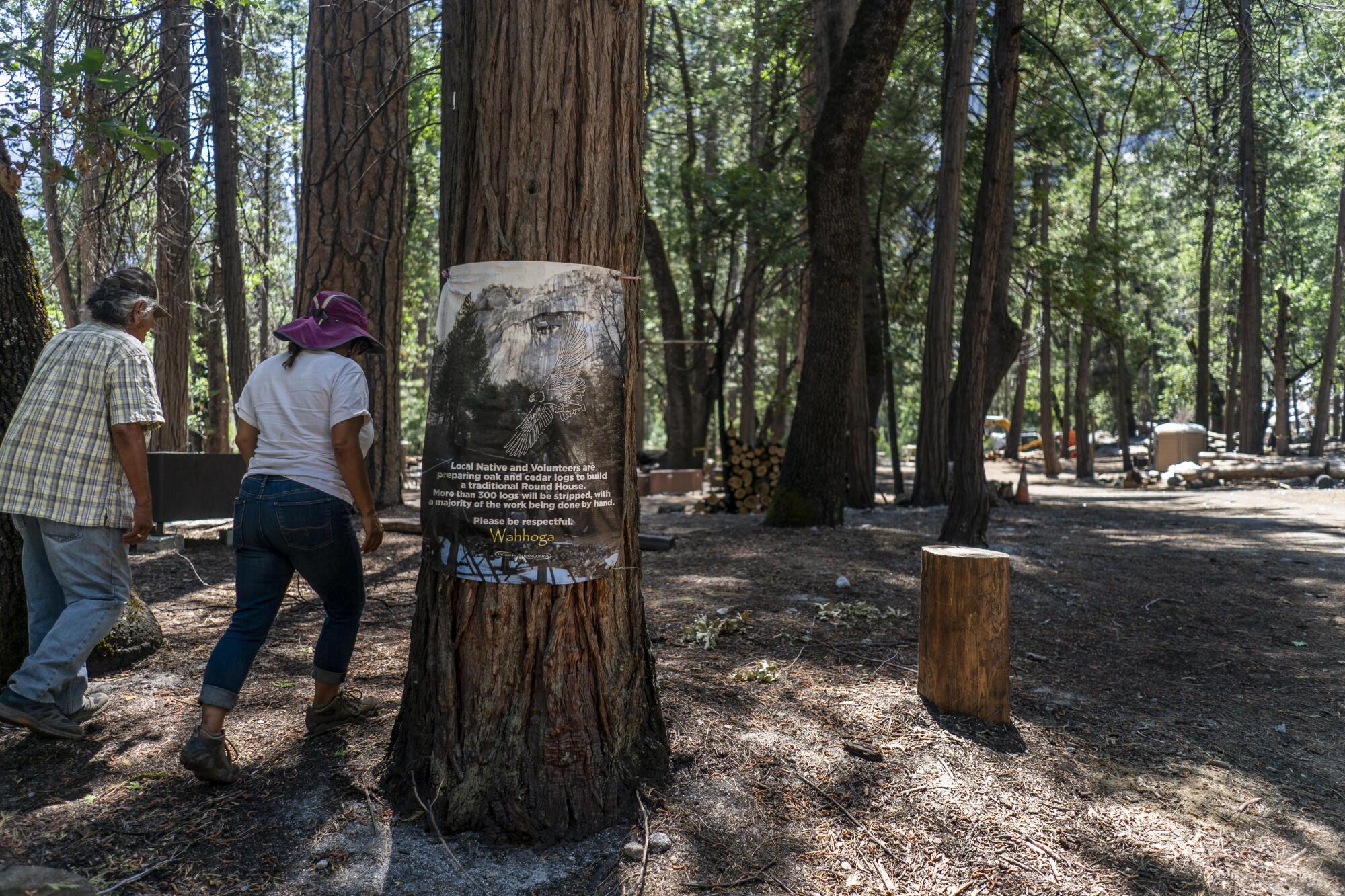
“In my opinion, this is an absurd finding,” Quesenberry said. “It’s deeply flawed.”
The proposed finding perplexed even some who had been involved in drafting or reviewing it, including three former employees of the Office of Federal Acknowledgment who submitted letters publicly criticizing it shortly after it was published. Two of the letters stated that the office had drafted several findings in favor of the tribe but that the decision appeared to have been changed after it was submitted to the Office of the Solicitor for review.
“At some point during OFA’s lengthy review process (8 years?), enough evidence to reach a positive determination became not enough evidence and a negative determination,” wrote Mark A. Nicholas, a historian who served on a three-person team that evaluated the petition. “What happened?”
Why was the Oak fire so much more destructive than the Washburn fire? Experts say it’s because of weather, terrain and forest management.
The proposed denial also disregards the Southern Sierra Miwuk’s long relationship with the National Park Service, which recognizes them as one of the original tribes of Yosemite, Quesenberry said.
More generally, he said, the federal acknowledgment process is fact-intensive and expensive. Its regulatory framework seems designed to defeat petitions, especially those from small California tribes that lack the funds to retain the attorneys and experts necessary to navigate the complex regulations, he said. Just one California tribe, the Death Valley Timbisha Shoshone, has won acknowledgment through the process in the 44 years since it was created, and that was in 1983.
“The underlying problem is the federal government has never really acknowledged its role in the destruction and dispossession of the California Indigenous people,” he said. “And so when you have a process in which you have to go back to the same government that historically was instrumental in the destruction of your culture and dispossession of your lands, which I believe is a clear conflict of interest, it’s a problem. The process is not a fair process.”
An increase in catastrophic wildfires has reduced California tree cover by 6.7% since 1985, and researchers fear the lost trees will never grow back.
The Southern Sierra Miwuk community’s recovery from the Oak fire has been buoyed by donations from other tribes around the state that have more resources available to them, said Vasquez’s husband Kevin Spach, 38, who is working as a tribal fire case manager.
“They understand the situation of a community without federal recognition,” he said. “In this instance, the money they gave made up for that in a big way.”
Still, it will be difficult for people to resettle nearby because there simply isn’t enough housing in Mariposa County, let alone affordable housing, River said. The market surged as remote workers flooded the area during the pandemic. Due to its proximity to the popular national park, a proliferation of vacation rentals has reduced availability and driven costs higher.
“Everything is geared toward Yosemite and tourism so there’s no cap on short-term rentals,” River said. “And this community is extremely low income so folks have even been moving out of their own homes and living in their garages so they can turn their house into an Airbnb so they can continue to live here.”
Some who lost property were uninsured because they lived traditionally in prefabricated sheds, yurts, or unregistered multigenerational homes, or because their carriers had dropped them or raised rates to unaffordable levels.
“So in a sense they will be once again displaced, gentrified out,” River said. “And this is going to impact us for many years to come.”
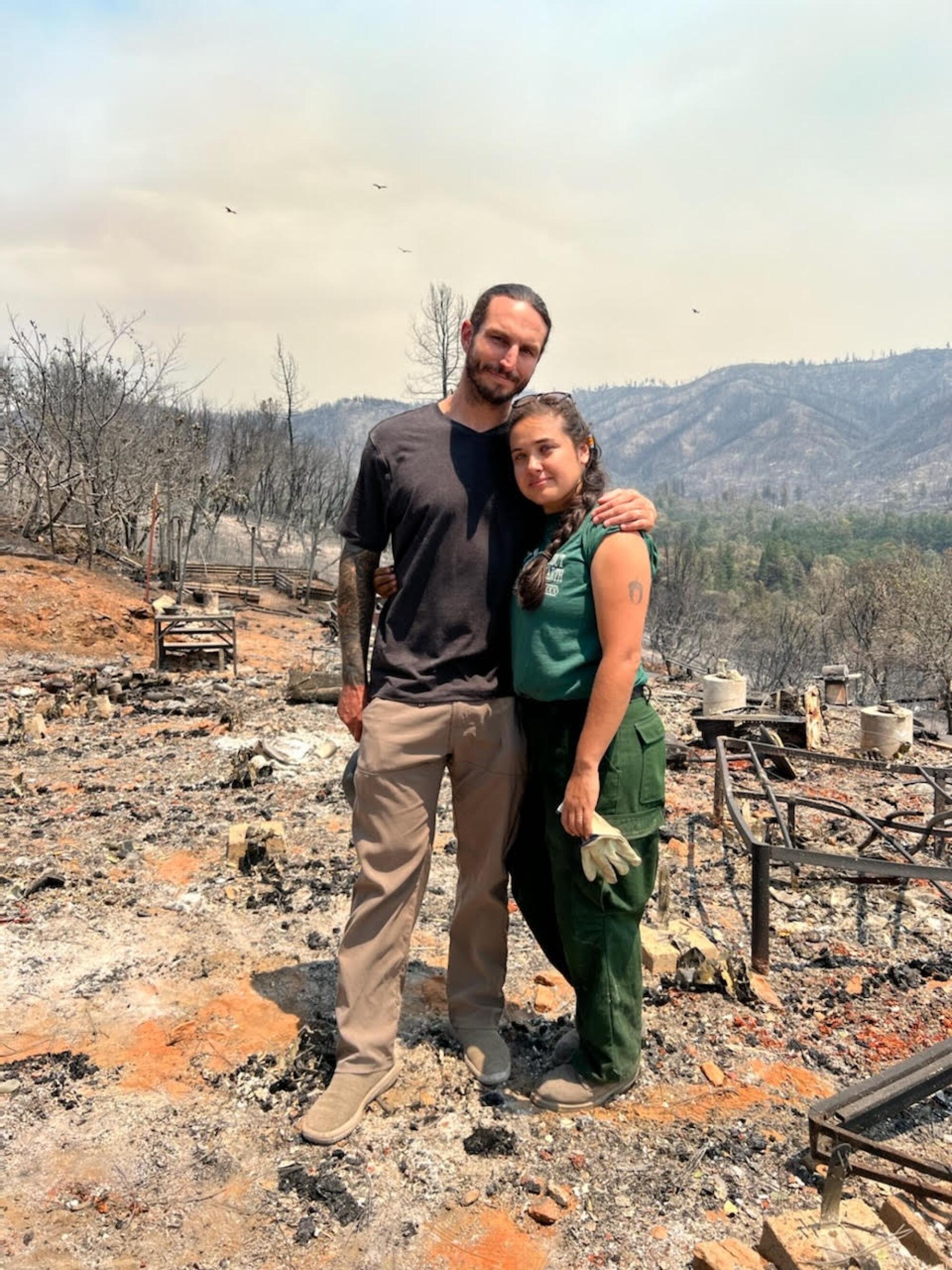
When the fire approached, Vasquez’s husband was able to round up their animals — two cats and two dogs, one of which he had to pull out from underneath their yurt — and escape under a glowing red sky.
Flames soon destroyed their home and solar panels and badly burned their well pump and electrical connections. They later returned to find their 1,500-plant pollinator garden incinerated and the massive, ancient manzanitas atop the mountain gone.
Vasquez’s dad had driven a truck for more than a decade to pay off the land. He installed a mobile home and planted fruit trees that bore mulberries, figs, apples, pears and pomegranates.
Paul Vasquez, who called himself Yosemitebear on social media, became an early Internet celebrity and folk hero after a 2010 YouTube video of his joyous reaction to a double rainbow over the property gained more than 50 million views. Irene and her husband moved onto the property after Paul passed away from a pulmonary embolism two years ago.
Although they want to remain close to the community and honor the emotional connection Irene still feels with her late father, she also fears the land won’t recover. It was further damaged by a series of powerful atmospheric river storms that sent silt flowing down the mountain because there was little surviving vegetation to hold the soil in place.
“It’s forever changed, altered, because it burned so hot,” she said.
And while the state has provided some assistance, she is not eligible for loans to build or buy a house that would otherwise be available to her if the Miwuk were federally recognized, she said.
“It just feels like justice doesn’t happen for us, isn’t happening for us,” she said. “And it doesn’t feel like it’s getting any easier.”
More to Read
Sign up for Essential California
The most important California stories and recommendations in your inbox every morning.
You may occasionally receive promotional content from the Los Angeles Times.
